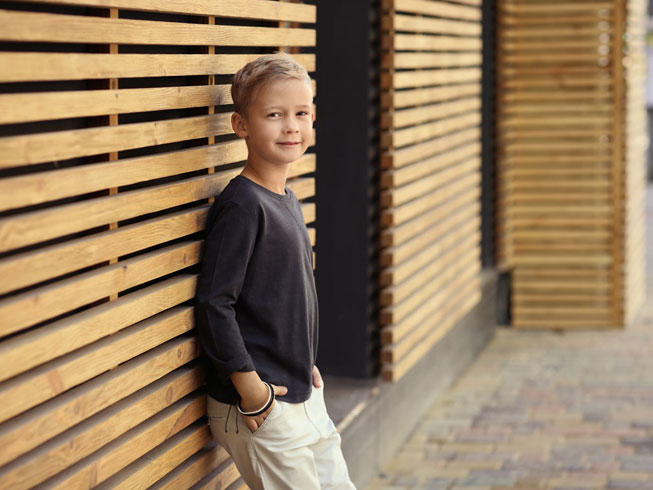Garment Type
Sweatshirt ProductionSweatshirt Production
Description:
A sweatshirt or a sweater (American English), or jumper (British English), is a garment intended to cover the torso and arms. A jumper is either a pullover or a cardigan, distinguished in that cardigans open at the front while pullovers do not. Some British dictionaries include cardigans as a type of jumper, while others do not; in the latter case, there is no hypernym equivalent to sweater covering both pullovers and cardigans.
Sweatshirts are a key component to everyone's wardrobe. They're a comfortable and stylish addition to anyone's wardrobe and are great for casual wear or lounge wear.
Sweatshirts have a groovy look that is perfect attire for any casual outings. And the best thing about sweatshirts is that it is an all-weather friend
You may wear them with your favorite pair of denim and step out, whereas you want to keep it completely casual you may wear them with your track pants and complete the look with perfect sneakers.
As a company we have made it our mission to provide our customers with genuine clothing at affordable prices.
We offer selective one stop services,tailoring with a wide range of contemporary designs and fabrications.Creating to produce beautifully crafted Sweatshirts at affordable prices.
We have a highly experienced team working in cooperation to develop and produce a wide spectrum of womenswear & menswear & kidswear at premium standards yet affordable prices.
We purchase yarns and send them to one of our knitted fabric site partners to produce a greige fabric. Then we send the greige fabric to one of our dyeing site partners.Whenever the fabrics are ready we send them to our cutting, sewing and ironing site partners who specialize in Sweatshirt Production.
We have huge experience in Allover digital printed Sweatshirt Production, Allover rotational printed Sweatshirt Production, Flock printed Sweatshirt Production, Puff printed Sweatshirt Production, Foil printed Sweatshirt Production, Spangle printed Sweatshirt Production, Pearl printed Sweatshirt Production.
And we also specialize in Normal wash Sweatshirt Production, Pigment wash Sweatshirt Production, Bleach wash Sweatshirt Production, Stone wash Sweatshirt Production, Acid wash Sweatshirt Production, Enzyme wash Sweatshirt Production, Caustic wash Sweatshirt Production, Garment wash Sweatshirt Production and over-dye Sweatshirt Production.
We also produce Sweatshirts - knitted from organic, BCI certified and recycled fabrics.
BCI is a non-profit organisation, helping farmers to grow cotton reducing stress on the local environment and improving the livelihoods and welfare of farming communities.
Organic cotton has the powerful advantage of internationally recognized organic farming standards that are enshrined in law.
We know that sustainability and quality go together. We believe that fashion and ecological thinking should go together too. We provide ecologically sustainable yarns, fabrics and ready-made garments yarn. We use textile waste, recycle it into sustainable products.
Garment Type:
Sweatshirts
Also Known As:
Jumper Production
Pullover Production
Cardigan Production
V-neck sweatshirt Production
Turtleneck sweatshirt Production
Crew neck sweatshirt Production
Pinafore Production
Sweater vest Production
Slipover Production
Tank top Production
Approximate Price:
from 7 Euro/pcs up to 12 Euro/pcs FOB Istanbul
Fabric weight:
from 230gr/m2 up to 450gr/m2
Fabric Type:
%100 Organic Cotton Sweatshirt Manufacturer (only combed)
Organic Cotton Blends
%100 BCI Cotton Sweatshirt Manufacturer(only combed)
BCI Cotton Blends
%100 Cotton Sweatshirt Manufacturer (OE, Carded or Combed)
Cotton Blends
%100 Viscose
Viscose Blends
Polyester Blends
Modal Blends
Recycled Cotton Polyester Sweatshirt Manufacturer
Minimum Order Quantity:
100pcs per design per color
400pcs per design per color if Organic Certification is needed
Print Type Available:
Allover digital printed Sweatshirt Production
Allover rotational printed Sweatshirt Production
Flock printed Sweatshirt Production
Puff printed Sweatshirt Production
Foil printed Sweatshirt Production
Spangle printed Sweatshirt Production
Pearl printed Sweatshirt Production
Wash Type Available:
Normal wash Sweatshirt Production
Pigment wash Sweatshirt Production
Bleach wash Sweatshirt Production
Stone wash Sweatshirt Production
Acid wash Sweatshirt Production
Enzyme wash Sweatshirt Production
Caustic wash Sweatshirt Production
Garment wash Sweatshirt Production and over-dye Sweatshirt Production
Ethical Trading - Production Site Compliance Certifications:
Disney Sweatshirt Production
BSCI
Sedex
Marks&SpencerSweatshirt Production
C&A Sweatshirt Production
Inditex
Primark Sweatshirt Production
GOTS
OCS
RCS
Client Details - Our Partner Sites have been producing Sweatshirt for Brands like:
Tommy Hilfiger Sweatshirt Supplier
Hugo Boss Sweatshirt Supplier
Gucci Sweatshirt Supplier
Ralph Lauren Sweatshirt Supplier
Stone Island Sweatshirt Supplier
Vineyard Vines Sweatshirt Supplier
True Religion Sweatshirt Supplier
AllSaints Sweatshirt Supplier
Diesel Sweatshirt Supplier
G-Star Raw Sweatshirt Supplier
Superdry Sweatshirt Supplier
Napapijri Sweatshirt Supplier
Zara Women-Men-Kids Sweatshirt Supplier
Pull&Bear Sweatshirt Supplier
H&M Sweatshirt Supplier
Primark Sweatshirt Supplier
More About Sweatshirt Production:
Soft, long-sleeved pullover garments usually made of a cotton or cotton/polyester blend knit fabric that is soft and fleecy on the inside, sweatshirts have long been worn by athletes while warming up, watching from the sidelines, or cooling off after exercising. The sweatshirts began to be worn by nonathletes as well during the 1960s and were actually adopted by designers as part of their collections in the 1980s. By the 2000s sweatshirts were one of the most common parts of a typical person's everyday wardrobe and came in many different fabrics and styles.
The word sweatshirt was first used during the mid-1920s to describe the simple pullover jerseys, usually gray, that athletes wore before and after workouts. During the 1930s Abe and Bill Feinbloom, who owned the Knickerbocker Knitting Company, came up with a technique for applying letters to the knitted sweatshirts. They also designed a sideline sweatshirt, with a hood and a zipper, intended for football players to wear while sitting out of the game. Their company eventually became Champion, one of the best-known American manufacturers of athletic wear.
Sweatshirts were still worn mainly by athletes until the 1960s, when sweatshirts displaying the names of colleges and universities became popular with students. The trend toward informal fashion during the 1960s brought sweatshirts out of the locker rooms and onto the streets, as young people began to dress for comfort instead of following formal dress codes.
It was in the 1980s, however, that sweatshirts went from casual wear to high fashion. During the 1980s fitness fads like jogging and aerobics became very popular. The layered look was also fashionable during the 1980s, and sweatshirts layered well over T-shirts and jeans or spandex leggings. Many people did not want to wear just any sweatshirt; in the image conscious 1980s they demanded sweatshirts with a designer brand name. Upscale designers and retailers filled that need. Loose and comfortable, sweatshirts became a basic part of almost everyone's wardrobe, and their popularity continued into the twenty-first century.
1) Normal Wash Sweatshirt Production:
Normal wash Sweathirt Production consists of washing garments in hot water with adequate detergent and softener, rinse with plain water and dry in tumble dryer until it is 100% dry. Some sodium is added to lend the sweatshirt a prominent washed look. Water temperature, proportion of components of wash is adjusted as per requirement of wash and types of fabric; the Sweatshirt is made of. The softener makes the fiber soft and tumble-drying makes the fabric fluffier. Our expert technician can handle washing by an expedient way to solve many problems arising out during washing. Washing can also affect different sweatshirt parts differently. Shell fabric may be solid color while pocket may be white pocketing piece. After washing, it may appear that pocketing piece has been stained.
2) Pigment Wash Sweatshirt Production:
Pigment Wash Sweatshirt production is similar to normal wash but a bit costlier. The sweatshirt is solid color pigment dye. The requirement is that the color should fade evenly to lend the sweatshirt a prominent washed look. Pigment wash requires a higher temperature of water than a normal wash.
3) Bleach Wash Sweatshirt Production:
Bleach wash sweatshirt production means that bleach chemical is used in water while washing in a tumble washer. Strict washing time is a requirement with such wash because otherwise the sweatshirt may be over bleached and the color cannot be reversed.
4) Stone Wash Sweatshirt Production:
Stone wash sweatshirt production means washing sweatshirts with special stones so that sweatshirts achieve a very strong washed effect. Volcanic stones are used in such wash abrade exposed parts of the sweatshirts, this idea of washing with porous volcanic stones is to give the sweatshirt a strong and rough wash to achieve the pronounced washed effect through abrasion on the exposed areas, such as the seams and pocket corners.
Sometimes, bleach is added to the wash so that the color fades in a more pronounced manner. This is done to make navy sweatshirts into a more faded light blue. Such wash requires a lot of skill, experience; workmanship and expertise so that desired results are achieved.
5) Acid Wash Sweatshirt Production:
Acid wash sweatshirts production is a patented process and can be used only by permission. Acid wash sweatshirt production is also a kind of stone wash. The wash is performed in two steps: in the first step, sweatshirt is washed without water and in the 2nd step with water.
The treated stones carry the chemical to bleach the exposed parts and bleach them to white. But the hidden parts remain untouched. Whitening agents are often added to water during rinse to make the white color in the sweatshirts whiter to display acid wash.
6) Enzyme Wash Sweatshirt Production:
Enzyme wash sweatshirt production is performed with a kind of live cell. Enzyme can break some fibers of fabric and gives the fabric special effect desired on the sweatshirt. Enzyme wash provides the fabric a soft, sanded or “peached” effect very desirable on many sweatshirts.
7) Caustic Wash Sweatshirt Production:
Caustic wash sweatshirt production is a pre- printing wash. Caustic is a strong chemical with highly corrosive features. Prior to printing on cotton fabrics, gray goods are treated in boiling water with caustic, which also has strong cleaning power, especially for grease. This caustic wash sweatshirt production can remove all soil, dirt, grease, fine particles of cotton seeds as well as all foreign materials. As a result, only pure cotton fiber in the fabric for printing is left. It leads to stability of printing and well-cleaned fabric. However, when we want to do caustic wash on sweatshirts, we just do the opposite of the above; prior to printing, fabric is not treated with caustic wash for cleaning.
Printing is done on the row & unclean fabric so that about 30% of the printing done on the surface may eventually fade away. Finally, printed sweatshirts are caustic washed. It leads to, about 30% of the printing washed away along with the foreign materials- leaving about 70% of the printing on the fabric. It eventually makes the design or stripe of the desired look. For this type of wash, the printing must be pigment print with a binder. Baking treatment should also be performed so that the color will stay on the fabric more or less securely to coincide with the caustic wash to be done later.
8) Garment Wash Sweatshirt Production And Over-Dye Sweatshirt Production:
This type of wash is also used for sweatshirts to give them an exclusive look. Garment wash sweatshirt production creates a unique but different look. In this process of wash, the lining or pocketing will pick up the color too. By this garment wash, direct dye or reactive dye same as dyeing fabrics or yarn may be used. Direct dye is cheap. So, direct dye may be utilized with the concomitant use of color fixing agent, after dying to make the color more stable. In case of solid color fabric staining within the sweatshirt is not a problem. However, if sweatshirts of different colors are washed together by the consumers, color may transfer to other sweatshirts. Reactive dye is always preferable in this case.






